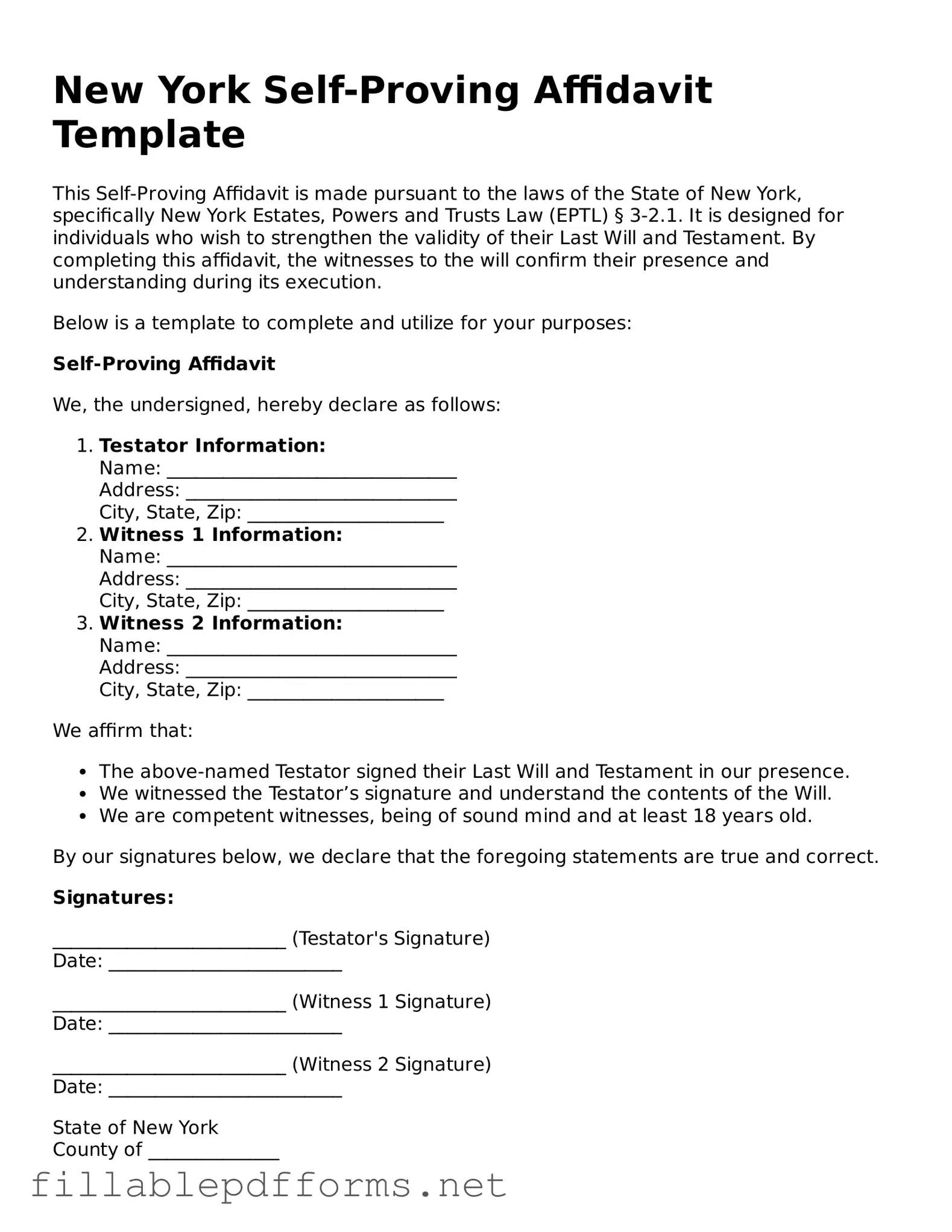Attorney-Verified Self-Proving Affidavit Form for New York State
The New York Self-Proving Affidavit form is a legal document that allows a testator's will to be validated without the need for witnesses to testify in court. This form streamlines the probate process by confirming that the will was executed properly and that the testator was of sound mind. By using this affidavit, individuals can ensure their final wishes are honored with greater efficiency.
Launch Editor Here
